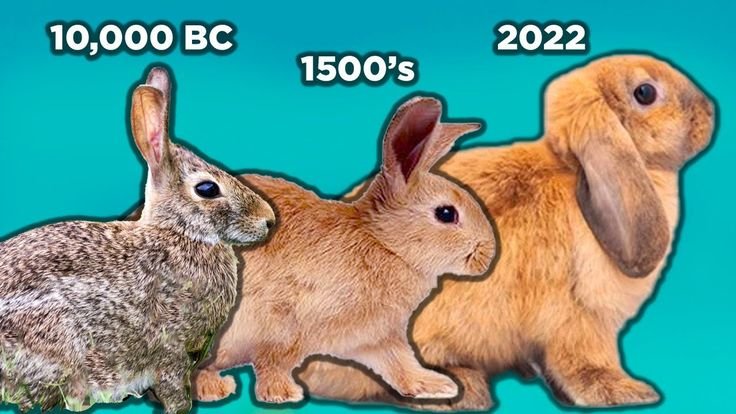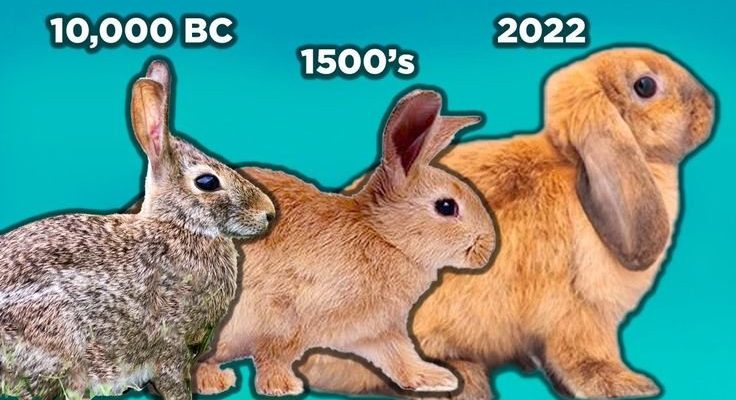
This journey is fascinating, filled with twists and turns that are as complex as a rabbit’s burrow system. From their prehistoric ancestors to the bunnies we adore today, the evolutionary history of the rabbit is rich and diverse. Let’s dive into how these delightful creatures have made their way through time.
Prehistoric Ancestors: The Early Beginnings
The story of rabbits starts much earlier than you might think. The earliest ancestors of modern rabbits belong to a group known as lagomorphs, which also includes hares and pikas. These creatures roamed the Earth around 40 million years ago during the Eocene epoch. At that time, the planet was a very different place, filled with lush forests and large herbivores.
Imagine ancient lagomorphs as small, rabbit-like animals, nibbling on the rich vegetation of the forests. Because they were prey animals, they developed strong hind legs and keen eyesight, helping them evade predators. Over time, these traits laid the foundation for what we recognize as rabbits today.
As climate changes occurred, the environments shifted, pushing these early lagomorphs to adapt even further. Their ability to thrive in various ecosystems set the stage for the diverse species that would emerge in the future.
The Rise of Modern Rabbits
Fast forward to about 10 million years ago, and that’s when we start to see the evolution of the rabbits we know today. During this time, modern rabbits began to branch off from their lagomorph relatives. They developed unique characteristics suited to different habitats across the globe.
For instance, the European rabbit, known scientifically as *Oryctolagus cuniculus*, emerged during this period. This species showcases some notable adaptations, like its ability to burrow and live in social colonies. These traits were essential for survival in a world where predators like foxes and birds of prey were plentiful.
Rabbits continued to adapt to their surroundings. The cottontail rabbit, native to North America, evolved to be quick and agile, allowing it to escape from threats swiftly. You might be wondering how they manage to survive in both urban and rural settings. The key lies in their remarkable ability to reproduce quickly, ensuring their populations remain stable even when faced with challenges.
Diversity of Rabbit Species
Today, there are about 30 species of rabbits spread across the globe, each with unique adaptations. Some rabbits, like the Arctic hare, have thick fur to withstand frigid temperatures, while others, like the desert rabbit, have long ears to dissipate heat.
Let’s take a closer look at a few notable species:
- European Rabbit: The original domesticated rabbit, these critters are often found in grasslands and forests.
- Cottontail Rabbit: Common in North America, they are known for their fluffy tails and quick speed.
- Rabbit of the Andes: Adapted to high altitudes, these rabbits have shorter ears and a thicker coat for warmth.
Each species is a testament to the rabbit’s adaptability and resilience. However, the differences among them don’t stop at appearance. Behavior, diet, and social structures also vary significantly, shaped by the environments they inhabit.
The Role of Rabbits in Ecosystems
Rabbits play a vital role in their ecosystems, serving as both prey and herbivores. As grazers, they help control vegetation growth, which can prevent overgrowth and promote healthy plant diversity. Their burrowing activities also aerate the soil, benefiting many other species in the area.
Moreover, they’re a primary food source for many predators, including birds of prey, foxes, and even snakes. This means that rabbits help maintain balance in the food chain. Their presence can signal a healthy ecosystem, making them an important focus for conservation efforts.
However, it’s essential to recognize that as environments change, some rabbit populations struggle. Urbanization and habitat destruction pose significant threats, with certain species facing a risk of extinction. Understanding their evolutionary history can help us appreciate the importance of protecting these charming animals.
The Impact of Domestication
Domestication has dramatically altered the rabbit’s role in human society. It began in Europe around 2,000 years ago, when humans started to keep rabbits for food. Think of it like the beginning of a furry friendship—humans appreciated their gentle nature and delicious meat!
Today, domesticated rabbits come in various breeds, each with unique traits, but they all share a common ancestor with their wild counterparts. Breeding practices focused on size, color, and temperament have resulted in the bloated variety of pet rabbits we see today. We now have fluffy Angoras and sleek Rex breeds, each with its own charm.
Rabbits have also become symbols in culture, often appearing in folklore and stories. From the whimsical Bunny in Alice’s Adventures in Wonderland to the chocolate Easter Bunny, these furry figures have burrowed their way into our hearts and imaginations.
The Future of Rabbits: Conservation and Challenges
As we look forward, the future of rabbits hangs in the balance. While some species thrive in the wild and as pets, others face significant challenges. Habitat loss, climate change, and disease are all affecting their populations.
Conservation efforts are crucial to ensure that wild rabbits continue to flourish. Various organizations are actively working to protect habitats and educate the public about the importance of these animals. For instance, supporting wildlife reserves and creating awareness about responsible pet ownership can make a significant difference.
You might be wondering what you can do to help. Simple actions like supporting local wildlife initiatives or adopting rabbits from shelters can play a part in preserving their legacy.
The evolutionary history of the rabbit is a captivating tale of resilience and adaptation. From their early ancestors to the myriad of species we see today, these gentle creatures have shown an incredible capacity to thrive in diverse environments.
Understanding their journey not only enriches our appreciation for them but also highlights the importance of conservation efforts. As we enjoy the company of these delightful animals, let’s remember their incredible past and work together to ensure their future is bright and secure.
So next time you see a rabbit—whether in your backyard or on a hike—take a moment to appreciate its fascinating history. After all, these little creatures have been hopping through time long before we ever took our first steps.

